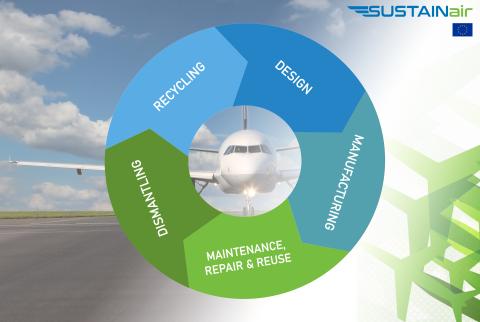SUSTAINair: circular economy for the aviation and aerospace sectors
SUSTAINair was an H2020-funded project developing circular economy principles for the aviation and aerospace design, manufacturing, operations and end-of-life phases.
The waste of high-quality, aerospace-grade materials is one of the biggest challenges to sustainable aerospace engineering. SUSTAINair applied circular economy principles to the design, manufacturing, operations and end-of-life phases of aircraft. This research project aimed to make the entire supply chain ecosystem greener and to set new standards for aerospace manufacturing, enabling an increase in cross-sector synergies.
The project focused on:
- Circular design of individual components and joining technologies for airframe construction (including morphing);
- Real-time structural health monitoring of materials and joints during operations;
- Improved maintenance and repair technologies to extend aircraft life time;
- Rivet removal demonstrator using robotics and water jet cutting for improved recovery of high-quality aluminium recycling materials.
The project provided the aviation sector with a path to a more cost-effective, low-carbon economy, while tackling the increase in resource consumption, waste and emissions.
See the description of the project.
- The project looked at the lifecycle of aircrafts and aimed to extend it. It covered manufacturing, maintenance, dismantling and recycling.
- It quantified the impact of its solutions, estimating that they would deliver the following cost reductions: 75% on repair, 3-10% on fuel consumption, 75% due to new upcycled thermoplastic parts vs peek solutions and 5-10% due to zero-waste assembly of thermoplastic parts.

